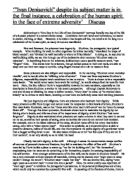Sources of particulate matter can either be natural or generated by human activities. The biggest natural sources are dust, volcanoes, and forest fires. Sea spray is also a large source of particles though most of these fall back to the ocean close to where they were emitted. The biggest human sources of particles are combustion sources, mainly the burning of fuels in internal combustion engines in cars and power plants, the wind blown from dust from construction sites and other land areas where the water or vegetation has been removed. Some of these particles are emitted directly to the atmosphere, primary emissions, and some are emitted as gases and form particles in the atmosphere, secondary emissions. About ten percent of the total amount of aerosols in the atmosphere is caused by human activity over the globe. The composition of suspended particulate matter depends on their sources. Wind-blown mineral dust tends to be made of mineral oxides and other material wind blown from the Earth’s crusts. Sea salt consists mainly of sodium chloride originated from sea spray; other constituents of atmospheric sea salt reflect the composition of sea water. In addition, sea spray aerosols may contain organic compounds, which influence their chemistry. the smaller and lighter a particle is, the longer it will stay in the air. Also, larger particles tend to settle to the ground by gravity in a matter of hours where as the smallest particles can stay in the atmosphere for weeks and are mostly removed by precipitation.
The most concentrated particulate matter pollution tends to be in densely populated metropolitan areas in developing countries. The primary cause is the extreme level of the burning of fossil fuels by transportation and industrial sources in these densely populated areas.
Maximum standards have been set by various governments due to the health effects of particulate matter. Many urban areas in the U.S. and Europe still frequently violate the particulate standards, though over the past twenty to thirty years urban air in these areas has become cleaner. EPA is the primary regulator in the US. EPA regulates primary particulate emissions and precursors to secondary emissions such as NOX, sulfur, and ammonia.
Common effects of inhaling particulate matter include asthma, lung cancer, cardiovascular issues, and premature death. The size of the inhaled particle is a main determinant of where in the reparatory tract the particle will go to. Larger particles usually are filtered out in the nose and throat and generally do not cause problems, but particulate matter smaller than about 10 micrometers, or PM10, can settle in the bronchia and the lungs and cause various health problems. Also, particles smaller than 2.5 micrometers, or PM25, tend to penetrate into the gas exchange regions of the lung. The smallest particulates may pass through the lungs and affect other organs. There is also some evidence that particles smaller than 100 nanometers can pass through cell membranes which could potentially cause damage to the brain. It has been suggested that particulate matter can cause similar brain damage as that found in Alzheimer patients. The large number of deaths and other health problems associated with particulate pollution was first demonstrated in the early 1970’s and has been reproduced many times since. Particulate matter pollution is estimated to cause 22,000-25,000 deaths per year in the United States.
Many technologies and industrial processes have been created to attempt to reduce suspended particulate matters. BlueTec is a technology developed to reduce particulate emissions from diesel engines in order to meet the stringent Californian standards. BlueTec is Daimler AG’s name for its two nitrogen oxide reducing systems, for use in their Diesel automobile engines. One is a urea-based reluctant, the other is called DeNOx and uses an oxidizing catalytic converter and particulate filter combined with other nitrogen oxide reducing systems. Both systems were designed to reduce pollutant emissions.
Works Cited
Fine Particle (PM2.5) Designations. 1 November 2007. US Environmental Protection Agency. 11 November 2007 <http://www.epa.gov/pmdesignations/>.
Particulate. 10 November 2007. Wikipedia, the Free Encyclopedia. 11 November 2007 <http://en.wikipedia.org/wiki/Particulate_matter>.







